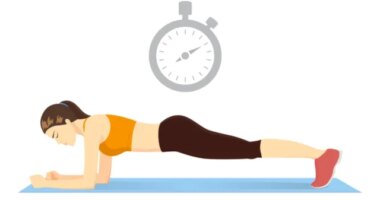Disorders Cure
oi-Amritha K
on February 20, 2021
Do you get freaked out by lotus stems? Skip that image of honeycomb on your feed? Well, you may have trypophobia then. Trypophobia, also termed as fear of holes, is an aversion or fear of clusters of small holes, bumps, or patterns.
While trypophobia is described as the fear of holes, it is important to note that it may also apply to closely clustered patterns. An individual may start experiencing trypophobia when they see trigger objects (objects that trigger the fear or disgust).
Research suggests that while the prevalence of trypophobia is unknown, it could be quite common. People with trypophobia have a strong physical and emotional reaction whenever they see patterns made up of holes or spots, and studies point out, the bigger the cluster of circles, the more uncomfortable one can feel [1].
Triggers Of Trypophobia
According to observations and studies, the common triggers of trypophobia are as follows [2]:
- Bubbles
- Bubble wrap
- Showerheads
- Condensation
- A cluster of eyes
- Lotus seed pods
- Honeycombs
- Strawberries
- Coral
- Aluminium metal foam
- Pomegranates
- Cantaloupe
- Holes in diseased or decaying flesh
- Skin problems like sores, scars, and spots
- Holes or bumps on flesh
- Holes or pebbles in concrete
- Air holes in a slice of bread
- Spotted patterns
Symptoms Of Trypophobia
The following symptoms arise in an individual when they are exposed to an object with small clusters of holes or shapes that resemble holes, and the primary reactions are fear and/or disgust [3].
- Sweating
- Panic attacks
- Emotional distress
- Fear and anxiety
- Nausea
- Body shakes
- Goosebumps
- Itching
- Panic attacks
- Rapid breathing
- Shaking
- Sweating
- Repulsion
- Vomiting
Although fear and disgust are reported together, research suggests that people report feeling greater disgust rather than fear. In some cases, people with trypophobia will often experience behavioural changes as well. Such as, they may avoid using bubble wraps, strawberries, lotus stem etc. [4].
Causes Of Trypophobia
The exact cause of trypophobia is not yet understood; however, we have gathered some understanding from the existing theories, and they are as follows:
- One of the most popular theory is that trypophobia is an evolutionary response to things that are associated with disease or danger, such as diseased skin, parasites, and other infectious conditions [5].
- Another theory is that the clustered holes share a similar appearance to skin and coat patterns on some venomous animals, and the fear or disgust could be a reaction to the unconscious associations [6].
- Association with infectious pathogens.
- A response to the visual characteristics of the patterns, that is, the reaction of an individual to the closely-knit patterns and nothing more. This theory incited whether trypophobia should be considered a mental health disorder or a natural response to certain types of visual stimuli [7].
- One study found that people with trypophobia were more likely to experience anxiety and depression [8].
Some people experience intense aversion and anxiety when they see bubbles in a cup of coffee or the holes in a sponge. This condition may be an exaggerated response linked to deep-seated anxiety about parasites and infectious diseases.
READ RELATED: How to lose visceral fat: The herbal extract proven to reduce the dangerous belly fat
Explanations for the condition known as trypophobia include the suggestion that people are evolutionarily predisposed to respond to clusters of round shapes because these shapes are also found on poisonous animals, like some snakes and the blue-ringed octopus.
Risk Factors Of Trypophobia
Trypophobia is more common in women than in men and can also be hereditary [9]. According to studies, some people who are afraid of hole patterns also have other mental disorders such as major depression, social anxiety, panic disorder, bipolar disorder, generalised anxiety disorder (GAD) and obsessive-compulsive disorder (OCD).
Diagnosis Of Trypophobia
Trypophobia is not a diagnosable condition because the phobia, as mentioned before, is not officially recognised by medical and mental health associations.
The limited information linked to trypophobia makes the diagnosis process hard. A psychologist or primary care doctor will ask about your symptoms and how they affect your everyday life. They may also refer to the DSM-5 to help in their diagnosis.
Treatment For Trypophobia
Currently, there are no specific treatments particularly effective in the treatment of trypophobia [10]. However, many of the treatments used for specific phobias are also likely to help manage the symptoms, and they are mentioned below:
- Exposure therapy (exposing a person to their fear object)
- Cognitive behavioural therapy (CBT) (working with a therapist to change the underlying behaviours)
- Medications such as beta-blockers and sedatives to help reduce anxiety and panic symptoms
- Relaxation techniques, such as deep breathing and yoga
On A Final Note…
Trypophobia is not officially recognised, and studies are limited. Current scientific discussions on trypophobia are fluctuating between whether it should be considered an official mental health condition.
GET THE BEST BOLDSKY STORIES!
Allow Notifications
You have already subscribed
Source:










